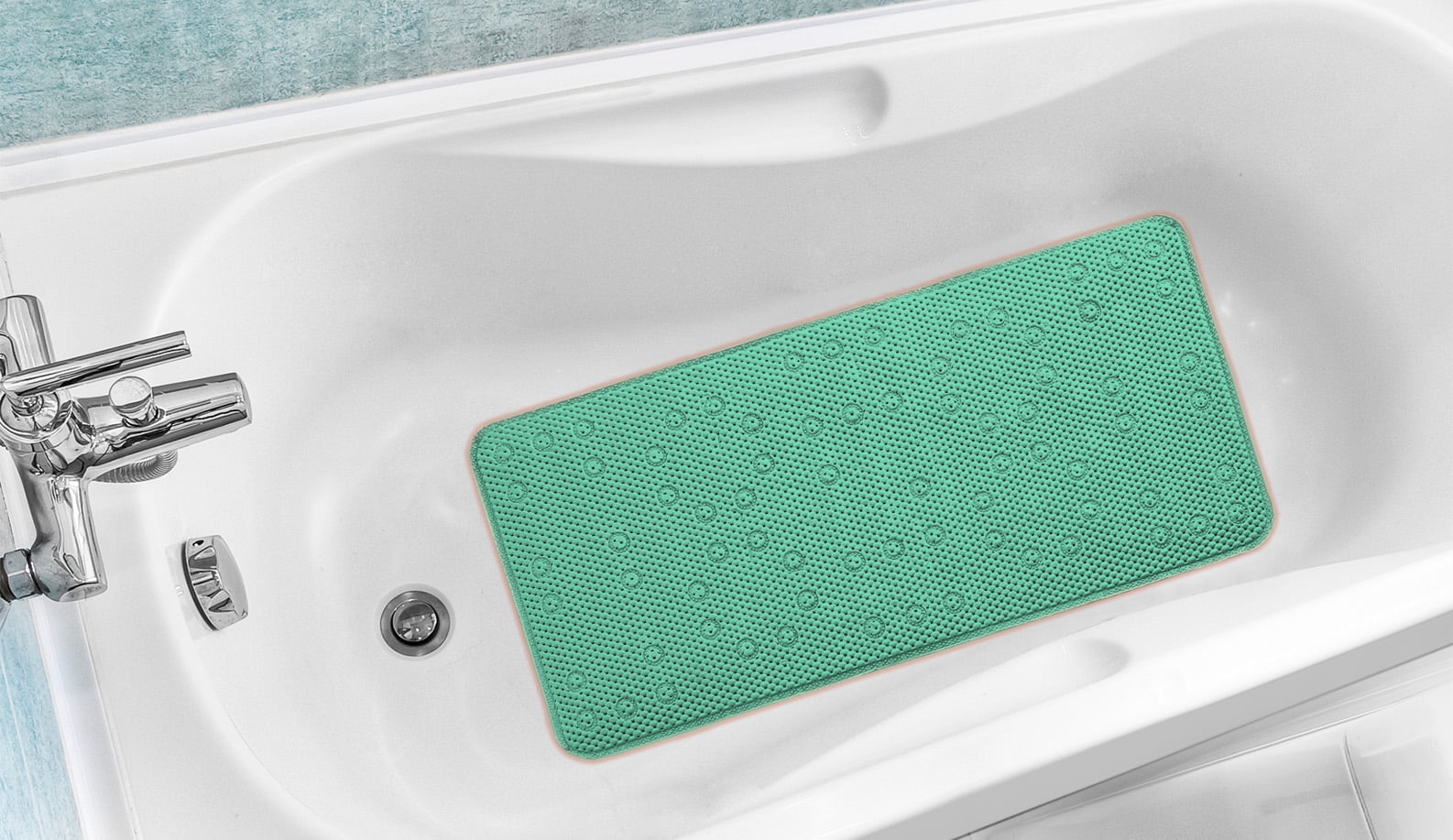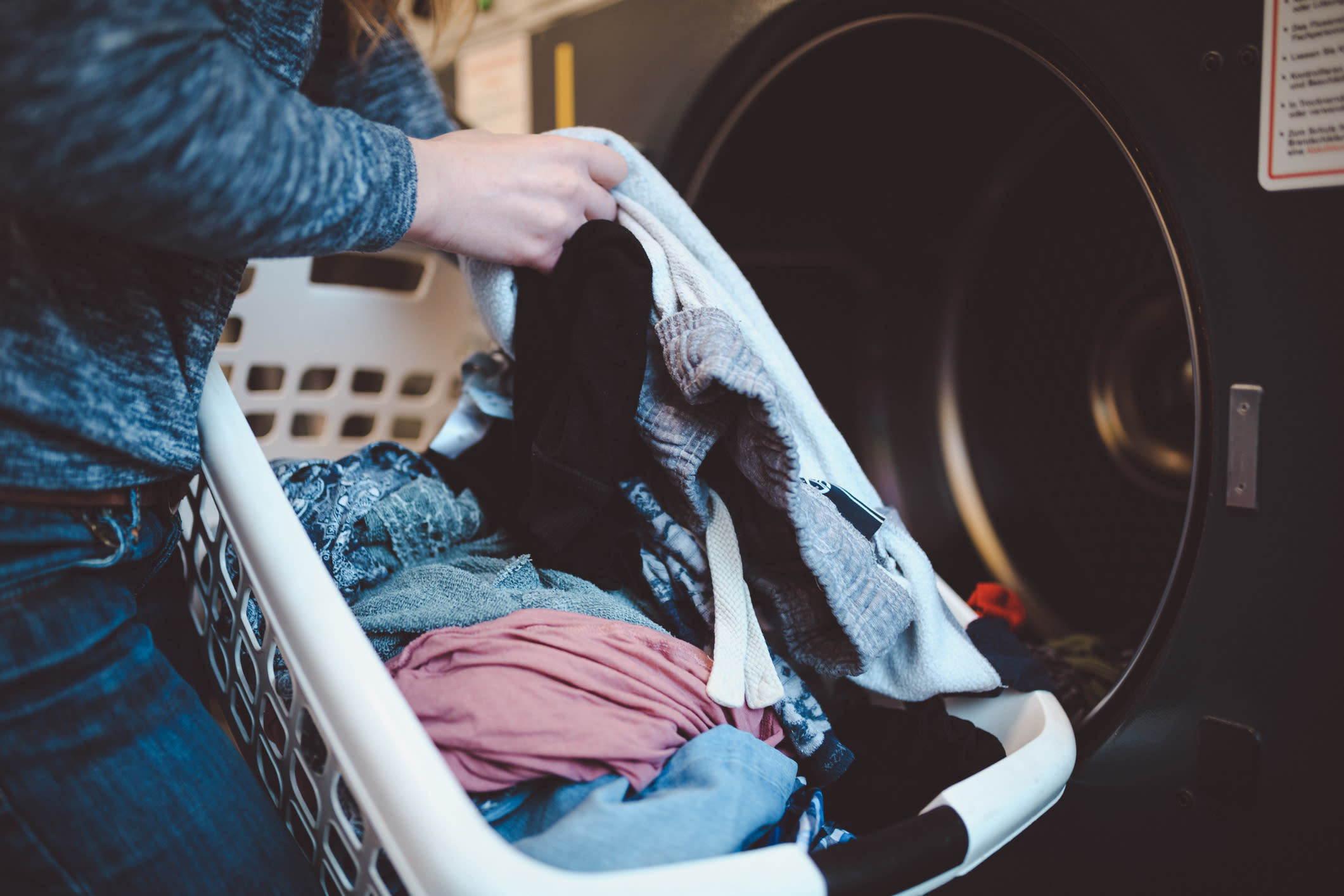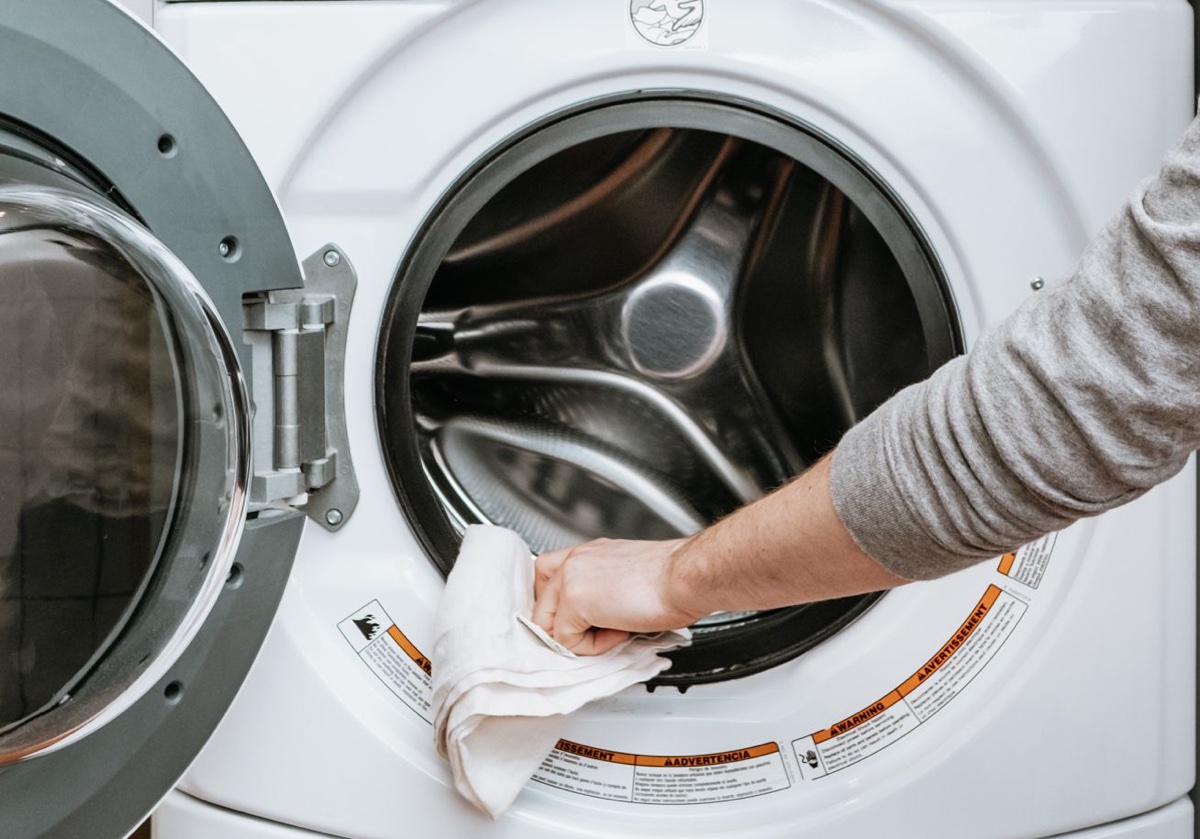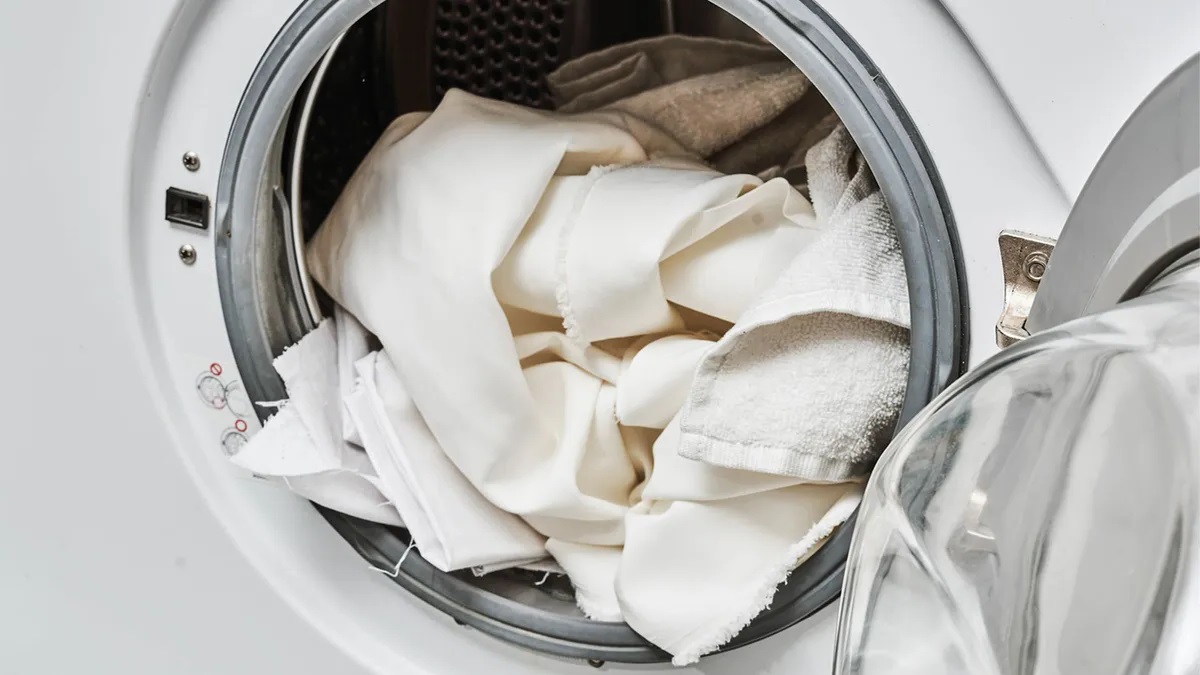Home>Furniture & Design>Bathroom Accessories>How To Wash Clothes In Your Bathtub


Bathroom Accessories
How To Wash Clothes In Your Bathtub
Modified: October 19, 2024
Learn how to efficiently wash clothes in your bathtub using simple bathroom accessories. Save time and money with this convenient laundry solution.
(Many of the links in this article redirect to a specific reviewed product. Your purchase of these products through affiliate links helps to generate commission for Storables.com, at no extra cost. Learn more)
Introduction
Washing clothes in a bathtub may seem like a throwback to a bygone era, but it can be a practical and effective way to clean your garments, especially when a washing machine is not readily available. Whether you're traveling, living in a small space, or simply looking to save on energy costs, mastering the art of hand-washing clothes in your bathtub can be a valuable skill.
In this comprehensive guide, we will walk you through the step-by-step process of washing your clothes in a bathtub, providing you with the knowledge and confidence to achieve clean and fresh laundry without the need for a traditional washing machine. By following these simple yet effective techniques, you can maintain the quality of your clothes and ensure that they are thoroughly cleaned and cared for.
So, if you find yourself facing a pile of laundry and no access to a washing machine, fear not! With a few basic supplies and a little bit of effort, you can transform your bathtub into a makeshift laundry station and achieve impressive results. Let's dive into the details and learn how to wash clothes in your bathtub like a pro.
Key Takeaways:
- Master the art of hand-washing clothes in your bathtub to achieve clean and fresh laundry without a washing machine. Sort, pre-treat, and wash with care for revitalized garments.
- Transform your bathtub into a makeshift laundry station and achieve impressive results with a few basic supplies and a little effort. Hand-wash clothes for clean, well-maintained laundry.
Step 1: Sort Your Laundry
Before embarking on the process of washing your clothes in the bathtub, it's crucial to begin by sorting your laundry. This initial step sets the foundation for an efficient and effective hand-washing experience. Sorting your laundry involves separating your garments based on color, fabric type, and level of soiling. By doing so, you can prevent color bleeding, protect delicate fabrics, and ensure that heavily soiled items receive the attention they need.
Sorting by Color
Start by dividing your laundry into separate piles based on color. This typically involves creating three distinct categories: whites, lights, and darks. Sorting your clothes in this manner helps prevent color transfer during the washing process, ensuring that your garments maintain their original hues. It's important to note that even a small amount of color bleeding can impact the overall appearance of your clothes, so taking the time to sort by color is a crucial step in preserving the integrity of your wardrobe.
Sorting by Fabric Type
In addition to sorting by color, it's essential to consider the fabric type of each garment. Delicate fabrics, such as silk, lace, and wool, require gentle handling and should be washed separately from sturdier materials. By separating your laundry based on fabric type, you can tailor your washing method to the specific needs of each garment, minimizing the risk of damage and ensuring that your clothes receive the appropriate care.
Sorting by Level of Soiling
Finally, take into account the level of soiling present on each item of clothing. Heavily soiled garments, such as those stained with mud or grease, may require pre-treatment or additional attention during the washing process. By identifying and sorting these items separately, you can address their cleaning needs more effectively, ultimately achieving better results and maintaining the overall cleanliness of your laundry.
By meticulously sorting your laundry before beginning the hand-washing process, you can lay the groundwork for a successful and efficient experience. This thoughtful approach to sorting ensures that each garment receives the appropriate care and attention, setting the stage for a thorough and effective hand-washing process.
Read more: How To Soak Clothes In An LG Washing Machine
Step 2: Pre-Treat Stains
Pre-treating stains is a crucial step in the hand-washing process, especially when dealing with stubborn or deeply embedded marks on your clothing. By addressing stains before immersing your garments in the water, you can significantly improve the chances of successful stain removal and ensure that your clothes emerge from the washing process looking clean and refreshed.
To begin pre-treating stains, it's essential to identify the nature of the stain and the fabric of the affected garment. Different types of stains, such as oil-based stains, protein-based stains, or dye-based stains, may require specific pre-treatment methods to effectively break down and lift the discoloration. Additionally, understanding the fabric composition of your clothing allows you to select appropriate pre-treatment products and techniques that will not harm the material.
For water-soluble stains, such as those caused by coffee, tea, or juice, you can create a simple pre-treatment solution using a mixture of water and a gentle liquid detergent. Apply this solution directly to the stained area, gently massaging it into the fabric with your fingertips or a soft-bristled brush. Allow the pre-treatment solution to penetrate the stain for a few minutes, giving it time to loosen the discoloration before proceeding to the washing stage.
For oil-based stains, such as grease or makeup, applying a small amount of dishwashing liquid or a specialized stain remover directly to the affected area can help break down the oils and facilitate their removal during the washing process. Gently work the pre-treatment product into the stain, taking care not to rub too vigorously, as this can spread the stain further or damage the fabric.
When dealing with protein-based stains, such as blood or sweat, it's important to avoid using hot water, as this can set the stain and make it more challenging to remove. Instead, opt for cold water and a mild enzymatic detergent to pre-treat these types of stains. Allow the pre-treatment solution to work its magic, breaking down the proteins and preparing the fabric for thorough cleaning.
In all cases, it's crucial to allow the pre-treatment solution to sit on the stained area for a sufficient amount of time, typically 10-15 minutes, to maximize its effectiveness. After the pre-treatment period, gently blot the stained area with a clean cloth to absorb any excess moisture and dislodged particles before proceeding to the next step in the hand-washing process.
By taking the time to pre-treat stains before washing your clothes in the bathtub, you can target specific areas of discoloration and increase the likelihood of achieving successful stain removal. This proactive approach to stain treatment sets the stage for a more thorough and effective hand-washing experience, ultimately leading to cleaner and revitalized garments.
Step 3: Fill the Bathtub with Water
Filling the bathtub with water is a pivotal step in the process of hand-washing clothes. It sets the stage for the actual cleaning and ensures that the garments are thoroughly immersed for effective washing. When filling the bathtub, it's essential to consider the water temperature, the amount of water needed, and any additional products that may be incorporated to enhance the washing process.
Begin by determining the appropriate water temperature for the garments being washed. In general, most clothing items can be safely washed in lukewarm water, which helps to activate the detergent and facilitate the removal of dirt and grime. However, for delicate fabrics or items with specific care instructions, it's crucial to adhere to the recommended water temperature to prevent damage or shrinkage.
Once the water temperature is established, proceed to fill the bathtub with an adequate amount of water to accommodate the laundry load. It's important to strike a balance between having enough water to fully submerge the garments and avoiding excessive water usage. As a general guideline, filling the bathtub to approximately halfway or three-quarters full is often sufficient for hand-washing a moderate-sized laundry load.
As the bathtub fills with water, consider incorporating a gentle liquid detergent or a specialized laundry soap designed for hand-washing. Adding the detergent directly to the running water allows it to disperse evenly, ensuring that all garments receive the cleaning power of the soap. Be mindful of the recommended detergent dosage based on the size of the laundry load, as using too much detergent can lead to excessive sudsing and make rinsing more challenging.
Once the bathtub is filled with water and the detergent is added, take a moment to agitate the water gently to encourage the soap to dissolve and distribute evenly. This agitation helps to create a uniform cleaning solution, priming the water for the immersion of the clothes and setting the stage for a thorough and effective hand-washing process.
By carefully filling the bathtub with water, considering the appropriate temperature, and incorporating the necessary detergent, you can establish an optimal environment for hand-washing your clothes. This thoughtful approach to preparing the washing solution ensures that your garments receive the best possible care and sets the stage for successful cleaning and revitalization.
Step 4: Add Detergent
Adding the right detergent is a crucial step in the hand-washing process, as it plays a pivotal role in lifting dirt, oils, and odors from your garments. When selecting a detergent for hand-washing, it's essential to opt for a gentle, liquid detergent specifically formulated for delicate fabrics and manual washing. These detergents are designed to provide effective cleaning power while minimizing the risk of damage to your clothes.
As the bathtub fills with water, it's time to introduce the detergent into the washing solution. The amount of detergent needed depends on the size of the laundry load and the level of soiling present on the garments. It's important to refer to the manufacturer's guidelines regarding the recommended dosage, as using too much detergent can lead to excessive sudsing and make rinsing more challenging.
To add the detergent, simply pour the appropriate amount directly into the running water, allowing it to disperse and mix thoroughly. This ensures that the detergent is evenly distributed throughout the washing solution, maximizing its cleaning efficacy and ensuring that all garments receive the benefits of the soap.
When hand-washing delicate or specialty fabrics, such as silk or wool, it's advisable to use a detergent specifically formulated for these materials. These specialized detergents are milder and gentler on delicate fibers, helping to preserve the integrity of the fabric while effectively removing dirt and impurities.
For heavily soiled items or garments with lingering odors, pre-soaking them in a solution of water and detergent before immersing them in the bathtub can help loosen dirt and grime, making the hand-washing process more effective. This pre-soaking step allows the detergent to penetrate the fabric and begin breaking down stubborn stains and odors, setting the stage for thorough cleaning during the hand-washing process.
By adding the appropriate detergent to the washing solution, you can harness the cleaning power needed to revitalize your garments while ensuring that they receive gentle and effective care. This step sets the stage for successful stain removal, odor elimination, and overall cleanliness, laying the foundation for a thorough and satisfying hand-washing experience.
Step 5: Add Your Clothes
With the bathtub filled with the appropriate water temperature and detergent, it's time to add your clothes to the washing solution. Carefully submerge each garment, ensuring that they are fully immersed and free of air pockets. This step is crucial in allowing the cleaning solution to penetrate the fabric and effectively lift dirt, oils, and impurities from the garments.
As you add your clothes to the bathtub, be mindful of the sorting criteria established in the initial step. Gently place the garments in the water, taking care to separate whites, lights, and darks to prevent color bleeding. Additionally, if you have pre-treated any stains, ensure that these areas are fully submerged in the washing solution, allowing the pre-treatment products to continue working on the affected areas.
For delicate fabrics or items with specific care instructions, such as silk blouses or wool sweaters, handle them with extra care when adding them to the bathtub. Avoid agitating or wringing these delicate garments, as excessive manipulation can lead to stretching, distortion, or damage to the fabric. Instead, gently lower these items into the water, allowing them to soak and benefit from the gentle cleaning action of the detergent.
As each garment is added to the washing solution, take a moment to gently agitate the water to ensure that the detergent is distributed evenly and that all items are fully saturated. This gentle agitation helps to kick-start the cleaning process, allowing the detergent to begin working on loosening dirt and grime from the fabric fibers.
Once all the garments are submerged in the washing solution, allow them to soak for the recommended duration, typically 10-15 minutes, to ensure thorough cleaning. During this soaking period, the detergent penetrates the fabric, breaking down impurities and preparing the garments for the next stages of the hand-washing process.
By adding your clothes to the washing solution with care and attention to detail, you set the stage for a thorough and effective hand-washing experience. This step ensures that each garment receives the appropriate cleaning treatment, setting the foundation for revitalized and freshly cleaned laundry.
Read more: How To Wash Your Hair In The Bathtub
Step 6: Agitate the Clothes
After allowing your clothes to soak in the washing solution, the next vital step in the hand-washing process is to agitate the garments gently. Agitation plays a crucial role in dislodging dirt, oils, and impurities from the fabric fibers, ensuring a thorough and effective cleaning outcome.
To agitate the clothes, use your hands to gently swish and move the garments around in the water. This gentle motion helps to create friction between the fabric fibers, allowing the detergent to penetrate deeper and lift away accumulated grime. As you agitate the clothes, pay particular attention to areas with stubborn stains or soiling, gently massaging these areas to encourage the release of dirt and discoloration.
When agitating the clothes, it's important to exercise caution, especially with delicate or specialty fabrics. Avoid vigorous or rough handling, as this can lead to stretching, distortion, or damage to the garments. Instead, opt for a gentle and methodical approach, focusing on thorough coverage and ensuring that each item receives the benefits of the agitation process.
For heavily soiled items or garments with persistent stains, you may need to give these areas extra attention during the agitation phase. Gently rubbing the fabric together or using a soft-bristled brush to target specific spots can help to dislodge tough stains and ensure that the garments emerge from the hand-washing process looking clean and revitalized.
As you agitate the clothes, take note of the water's appearance, which may become discolored as dirt and impurities are released from the fabric. This visual indicator reflects the effectiveness of the agitation process, signaling that the detergent is actively lifting dirt from the garments.
By agitating the clothes with care and attention to detail, you facilitate the thorough cleaning of your laundry, ensuring that each garment receives the necessary treatment to emerge fresh and revitalized. This step sets the stage for successful stain removal and overall cleanliness, bringing you closer to achieving the desired results from your hand-washing endeavor.
To wash clothes in your bathtub, start by filling the tub with warm water and adding detergent. Then, agitate the clothes with your hands, let them soak, and finally rinse and hang to dry.
Step 7: Let the Clothes Soak
After agitating the clothes in the washing solution, allowing them to soak is a crucial step in the hand-washing process. This period of soaking enables the detergent to continue working on dislodging dirt, oils, and impurities from the fabric fibers, ensuring a thorough and effective cleaning outcome.
As the garments soak in the washing solution, the detergent penetrates deeper into the fabric, targeting stubborn stains and lifting embedded grime. This soaking phase is particularly beneficial for heavily soiled items or garments with persistent odors, allowing the detergent to work its magic and prepare the garments for the final stages of the hand-washing process.
The recommended duration for letting the clothes soak is typically 10-15 minutes, although this may vary based on the level of soiling and the fabric type. During this time, it's essential to ensure that all garments remain fully submerged in the washing solution, allowing the detergent to reach every fiber and address cleaning needs comprehensively.
For delicate or specialty fabrics, such as silk, lace, or cashmere, the soaking phase is especially important, as it provides a gentle yet effective method of cleaning without subjecting the garments to harsh agitation or mechanical action. This gentle treatment ensures that delicate items receive the care and attention they require, resulting in clean and well-maintained clothing.
As the clothes soak, you may notice the water taking on a slightly discolored appearance, indicating that dirt and impurities are being released from the fabric. This visual cue reaffirms the effectiveness of the soaking process, demonstrating that the detergent is actively working to cleanse the garments and revitalize their appearance.
By allowing the clothes to soak in the washing solution, you facilitate a thorough and effective cleaning experience, ensuring that each garment receives the necessary treatment to emerge fresh and revitalized. This step brings you closer to achieving the desired results from your hand-washing endeavor, setting the stage for clean, refreshed laundry without the need for a traditional washing machine.
Step 8: Rinse the Clothes
Rinsing the clothes is a critical step in the hand-washing process, as it serves to remove residual detergent and suspended dirt from the garments, ensuring that they emerge clean, refreshed, and free of any cleaning product residues. This step is essential to prevent potential skin irritation or fabric damage that may result from leaving detergent in the fabric fibers.
To begin the rinsing process, drain the soapy water from the bathtub, gently pressing the garments against the tub to expel excess water. Once the initial washing solution is drained, refill the bathtub with clean, lukewarm water. The water temperature should match the initial washing temperature to maintain consistency and prevent potential fabric damage due to sudden temperature changes.
As the bathtub refills with clean water, carefully submerge the garments and agitate them gently to encourage the release of any remaining detergent and dirt. This gentle agitation helps to dislodge any lingering impurities from the fabric fibers, ensuring a thorough rinsing process.
After agitating the clothes in the clean water, allow them to soak for a brief period, typically 5-10 minutes. This soaking phase enables the clean water to penetrate the fabric, further diluting and removing any residual detergent, leaving the garments fresh and free of cleaning product residues.
Once the soaking period is complete, drain the clean water from the bathtub, gently pressing the garments to expel excess water. Repeat this process as needed until the water runs clear, indicating that the garments are free of detergent and impurities.
After rinsing the clothes thoroughly, gently press them to remove excess water before proceeding to the final step of the hand-washing process: drying the garments. By diligently rinsing the clothes, you ensure that they are free of detergent residues and impurities, setting the stage for clean, revitalized laundry ready for the drying phase.
Step 9: Hang or Lay Flat to Dry
After completing the hand-washing process, the final and crucial step is to properly dry your garments. How you choose to dry your clothes can significantly impact their appearance and longevity. Whether you opt to hang them or lay them flat, the goal is to ensure that they dry thoroughly and maintain their shape and quality.
For garments that can be hung, such as shirts, dresses, and pants, using a clothesline or a drying rack is an effective method. When hanging clothes, it's important to use hangers that are appropriate for the specific garment type. For example, padded hangers are ideal for delicate items like blouses and dresses, as they help maintain the shape of the shoulders and prevent unsightly creases. Additionally, hanging clothes in a well-ventilated area, away from direct sunlight, can prevent color fading and potential damage to the fabric.
On the other hand, laying clothes flat to dry is the preferred method for delicate items such as wool sweaters, cashmere garments, and certain types of knitwear. To lay clothes flat, gently reshape the garments to their original dimensions and place them on a clean, dry towel or a mesh drying rack. This method allows the garments to retain their shape and prevents stretching or distortion that may occur when hanging them.
Regardless of the drying method chosen, it's essential to allow the garments to dry completely before storing or wearing them. Proper drying not only ensures that the clothes are ready to wear but also helps prevent musty odors and mildew growth, particularly in humid environments.
By carefully selecting the appropriate drying method for each garment and allowing them to dry thoroughly, you can preserve the quality and appearance of your hand-washed clothes. This final step completes the hand-washing process, leaving you with clean, fresh, and well-maintained laundry ready to be enjoyed.
Conclusion
Mastering the art of hand-washing clothes in your bathtub is a valuable skill that offers practicality, resourcefulness, and the ability to maintain clean and fresh laundry without the reliance on a traditional washing machine. By following the step-by-step process outlined in this comprehensive guide, you have gained the knowledge and confidence to effectively hand-wash your garments, ensuring that they receive the care and attention they deserve.
From the initial step of sorting your laundry based on color, fabric type, and level of soiling to the meticulous pre-treatment of stains and the careful selection of water temperature and detergent, each stage of the hand-washing process contributes to the overall cleanliness and revitalization of your clothes. The thoughtful approach to adding your clothes to the washing solution, agitating them gently, and allowing them to soak and rinse thoroughly ensures that each garment receives the necessary treatment for a successful hand-washing experience.
As you progress through the final step of drying your hand-washed clothes, whether by hanging them or laying them flat, you complete the journey of transforming your bathtub into a makeshift laundry station, achieving clean, revitalized garments ready to be enjoyed.
By embracing the art of hand-washing clothes in your bathtub, you have demonstrated resourcefulness, care, and a commitment to maintaining the quality of your wardrobe. This skill not only offers a practical solution in situations where a washing machine is unavailable but also allows you to take a hands-on approach to caring for your clothes, ensuring that they remain clean, fresh, and well-maintained.
So, the next time you find yourself facing a pile of laundry and no access to a washing machine, remember the valuable techniques and insights you have gained from this guide. With a few basic supplies, a little bit of effort, and the knowledge you now possess, you can confidently transform your bathtub into a hub of cleanliness, achieving impressive results and maintaining the quality of your clothes with ease.
Frequently Asked Questions about How To Wash Clothes In Your Bathtub
Was this page helpful?
At Storables.com, we guarantee accurate and reliable information. Our content, validated by Expert Board Contributors, is crafted following stringent Editorial Policies. We're committed to providing you with well-researched, expert-backed insights for all your informational needs.













0 thoughts on “How To Wash Clothes In Your Bathtub”